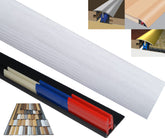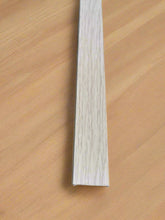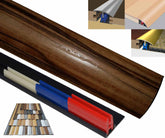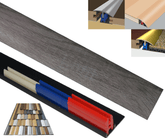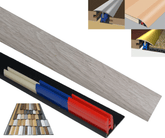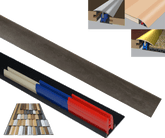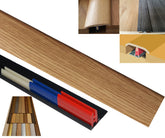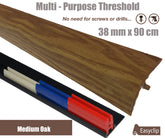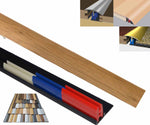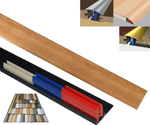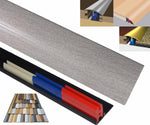How to Fit Skirting Boards Like a Pro: A Complete Step-by-Step Guide
How to Fit Skirting Boards Like a Pro: A Complete Step-by-Step Guide
Fitting skirting boards might seem like a small detail in home improvement, but it’s one of those finishing touches that can completely transform a room. Skirting boards not only cover the joint between the wall and floor, but they also protect your walls from scuffs, hide uneven edges, and add a polished, professional finish to your interior.
Whether you’re renovating a room or fitting skirting in a new build, this comprehensive guide will walk you through everything you need to know—from preparation and measuring to cutting, fitting, and finishing.
Why Skirting Boards Matter
Before diving into the “how,” it’s worth understanding why skirting boards are so important.
-
Aesthetic Finish: Skirting boards frame your room, giving it a clean, completed look. They help define the style—modern, traditional, or minimalist—depending on the profile and height you choose.
-
Wall Protection: Everyday activities like vacuuming or moving furniture can easily damage lower wall sections. Skirting boards act as a protective barrier.
-
Concealing Imperfections: They cover gaps between uneven walls and floors, making your renovation look seamless.
-
Cable Management: Some modern skirting profiles are designed to hide electrical or data cables discreetly.
Tools and Materials You’ll Need
Before you begin, make sure you have the right tools on hand. Preparation will make the job faster and more precise.
Tools:
-
Mitre saw or hand saw with mitre box
-
Tape measure
-
Pencil
-
Spirit level
-
Coping saw (for internal corners)
-
Nail gun or hammer and finishing nails
-
Adhesive (grab adhesive or construction glue)
-
Sandpaper (120–180 grit)
-
Caulking gun and decorator’s caulk
Materials:
-
Skirting boards (MDF, pine, oak, or PVC, depending on your preference)
-
Wood filler
-
Paint or varnish (optional for finishing)
Step 1: Preparing the Area
Start by clearing the room and ensuring your walls and floors are clean and dry. If you’re replacing old skirting boards, carefully remove them using a chisel and hammer. Work slowly to avoid damaging the plasterwork.
Inspect the walls for damage or uneven surfaces. Fill any gaps or cracks and allow them to dry completely. This ensures your new skirting will sit flush and look tidy.
If you’re painting the walls, it’s often best to do so before fitting the skirting boards. Touch-ups can be done afterward for a neat finish.
Step 2: Measuring and Marking
Accurate measurements are key to a professional-looking fit.
-
Measure each wall length where the skirting will be installed.
-
Write down the measurements, noting which corners are internal (where two walls meet inward) and which are external (where they meet outward).
-
Add 10% extra to your total measurement to account for mistakes or waste.
Before cutting, mark each board carefully with a pencil, and double-check your angles before making any cuts.
Step 3: Cutting the Skirting Boards
Internal Corners
Internal corners typically require a coped joint or a mitred joint.
-
Mitred Joint: Cut both boards at a 45-degree angle using a mitre saw. This method is fine for most DIY jobs, but it works best if your walls are perfectly square.
-
Coped Joint: For a tighter, professional finish, cut the first board square and fit it flush against the wall. Then, cut the second board at a 45-degree angle and use a coping saw to follow the profile of the moulding. This allows the second board to sit snugly against the first.
External Corners
For external corners, cut both boards at 45 degrees outward, ensuring they meet neatly at the corner. Always test the fit before attaching.
Step 4: Fixing the Skirting Boards to the Wall
There are two main ways to fix skirting boards: adhesive and nails (or screws).
Option 1: Adhesive Fixing
This is the most common and simplest method, especially for plastered or drywall surfaces.
-
Apply a strong grab adhesive to the back of the skirting in a zigzag pattern.
-
Press the board firmly against the wall and hold it in place for a few seconds.
-
Use small wedges or spacers at the bottom if necessary to keep the board level while it sets.
Option 2: Nailing or Screwing
If your walls are uneven or you’re working on older properties, mechanical fixing might be better.
-
Nail or screw through the thickest part of the skirting into the wall studs or plugs.
-
Countersink the heads slightly below the surface.
-
Fill over the holes later with wood filler for a smooth finish.
Step 5: Filling, Sanding, and Caulking
Once all boards are securely in place:
-
Fill any nail holes or gaps with wood filler.
-
Sand the filled areas smooth once dry.
-
Use decorator’s caulk to seal along the top edge where the skirting meets the wall. This prevents dust buildup and creates a seamless transition.
Allow the caulk and filler to dry before painting or varnishing.
Step 6: Finishing Touches
You can now paint, stain, or varnish your skirting boards to match your room’s décor. MDF skirting boards usually come primed and ready for painting, while natural wood skirting can be stained for a rustic or traditional finish.
If you prefer a crisp, modern look, go for a satin white finish. For older homes, a rich wood stain can complement period details beautifully.
Common Mistakes to Avoid
-
Skipping the Measuring Step: Even small miscalculations can lead to poor joins and wasted material.
-
Not Checking Wall Angles: Few walls are perfectly square—always test your mitres before fixing.
-
Overusing Adhesive: Too much glue can make boards uneven or cause messy squeeze-outs.
-
Neglecting Caulking: Skipping caulk can leave visible gaps that collect dust and ruin the finish.
Final Thoughts
Fitting skirting boards is one of those satisfying DIY projects that can dramatically improve the look of any room. With the right tools, careful measurements, and patience, you can achieve a professional result without hiring a tradesperson.
Take your time with each step, especially when cutting and joining corners, and you’ll end up with skirting that enhances both the beauty and durability of your space.


